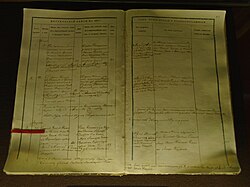
In Russia, marriage records are vital tools for genealogical research, offering key information about individuals and their familial ties. Before the Soviet era, marriage documents were primarily kept in church records, with civil registration becoming standardized under the Russian Empire. After Russia became the Russian Soviet Federative Socialist Republic in 1917 and later with the establishment of the Soviet Union in 1922, civil registration became more structured, and marriage certificates were issued by local government authorities such as the NKVD. These records include personal details such as names, ages, birthplaces, and occupations of the couple. Political and geographical changes have greatly impacted access to these records, especially with Russia'shifting borders, first after World War I later after World War II and again after the Russian invasion of Ukraine. The changing political landscape and administrative divisions during these times make genealogical research in Russia both challenging and fascinating, as families were sometimes split between different nations. Despite this, marriage records remain crucial for tracing family histories in the region.
Research your ancestors on MyHeritage
Collections available in Russia
|
Russia, Marriages, 1793-1919 |
Search marriage records in Europe
- Albania
- Andorra
- Armenia
- Austria
- Azerbaijan
- Belarus
- Belgium
- Bosnia and Herzegovina
- Bulgaria
- Croatia
- Cyprus
- Czechia
- Denmark
- Estonia
- Finland
- France
- Georgia
- Germany
- Greece
- Hungary
- Iceland
- Ireland
- Italy
- Kazakhstan
- Latvia
- Liechtenstein
- Lithuania
- Luxembourg
- Malta
- Moldova
- Monaco
- Montenegro
- Netherlands
- North Macedonia
- Norway
- Poland
- Portugal
- Romania
- Russia
- San Marino
- Serbia
- Slovakia
- Slovenia
- Spain
- Sweden
- Switzerland
- Türkiye
- Ukraine
- United Kingdom
- Vatican City


